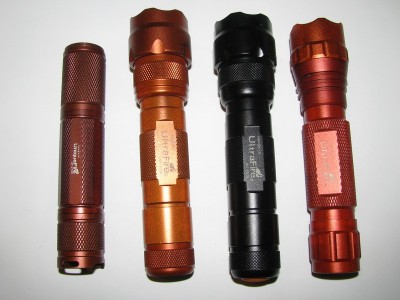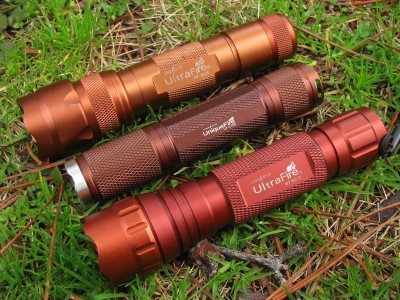I have a “hobby charger” to charge my lithium-ion batteries for flashlights. Hobby chargers are meant for people who use remote control airplanes and things like that to charge the battery packs. They run off of 12 volts DC, like a car battery so you can take them in the field and charge up. They don’t come with a battery holder, just clips that you might attach to a battery pack which has a number of different cells in it. The charger can charge packs like that and can be configured for as many cells and whatever current you want. My lithium-ion batteries are all single cell, but the hobby charger follows the best charging routine for lithium ion batteries: it applies a constant current that you specify until the pack reaches its maximum voltage (usually 4.2 volts for a single cell), then holds that constant voltage and lets the current taper off until the battery is full. This is called CC/CV.
Anyway, one of the features of this hobby charger is that it can monitor the temperature of the battery. Some battery packs can get very hot while charging so, in addition to monitoring the voltage, current, time, and polarity, the charger can also make sure the temperature doesn’t get too high. Normally this isn’t a problem because I’m not charging at real high currents, but I thought it might be good to get a temperature probe anyway since the charger didn’t come with one. So I look it up where to get one and, because these are hobby people, they say build your own. All you need is an LM35, some wire and futaba plug that goes into the charger.
I looked up LM35 and it is a 3-prong electronic component like a capacitor or resistor. You apply 4-30 volts of power and the LM35 will output a voltage that tells you the temperature in degrees Celsius. A voltage of 0.300V is 30 degrees Celsius. It’s that simple. The range is -55 to 150 degrees, so it will even give you a negative output if the temperature is below freezing. What a neat thing. I found a place on eBay selling them for 99 cents with free shipping, so I had to order one. It is coming from Thailand, so it will be a while before I get it.
Then I went looking for a futaba plug and it wasn’t quite as simple, but I did find that you can actually just buy a pre-made temperature probe for $2.60, but it is currently out of stock, so I will get one later.



